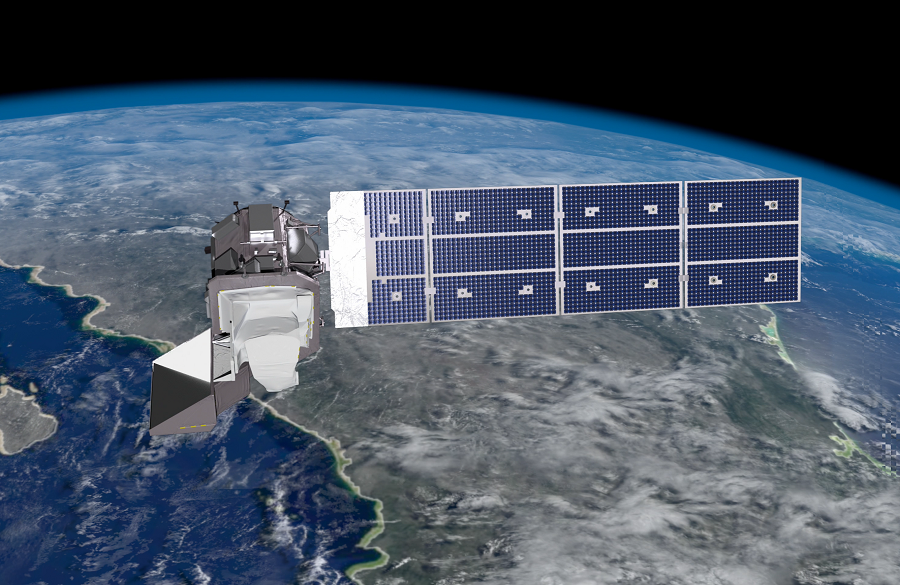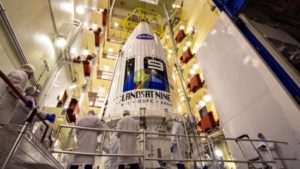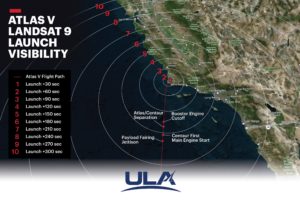
All systems are “GO” for launch of a United Launch Alliance (ULA) rocket that will lift the new Landsat 9 Earth-observing satellite into space from the Vandenberg Space Force Base in California on Monday. The launch is scheduled to occur within a 30-minute launch window that opens at 11:11 am PT / 2:11 pm ET. Earlier today, the crew tied to the Launch Readiness Review gave approval for Monday’s liftoff. Meteorologists at Vandenberg Space Force Base predict there will be a 90% or better favorable weather conditions for launch time. NASA and the U.S. Geological Survey (USGS) are responsible for the satellite which Northrop Grumman built. Landsat 9 is the most advanced satellite in the Landsat series; it will extend the data record of Earth’s land surface that began with the first Landsat satellite in the early 1970s. Landsat’s high-quality scientific data makes multi-decadal time series studies possible, and its data are regularly used for land management efforts around the world. The LANDSAT series of satellites celebrated their 49th birthday earlier this year.
The launch was originally scheduled for earlier this month but was delayed due to complexities created by the ongoing pandemic in the United States. Due to an increase in demand for liquid oxygen for COVID patients, there was a transportation shortage which impacted over-the-road deliveries of liquid nitrogen (LN2) supplies for launch. The government supplier, Defense Logistics Agency, coordinated a new delivery of LN2 with their supplier to the base. With rocket fuel on-hand and to make way for other space travel traffic, the launch was rescheduled to Monday, September 27.
In preparation for launch, Landsat 9 was successfully joined, or mated, with the rest of the Atlas V launch vehicle in the early morning hours of Wednesday, September 15, 2021. “This is one of the major milestones in the processing operations involving both the observatory team and the launch vehicle team,” explained John Satrom, the NASA Landsat 9 Launch Integration Manager. “Once the observatory is mated to the launch vehicle, ULA assumes responsibility for the health and safety of Landsat 9 as we jointly make the final preparations for launch.”
“We are proud to continue to serve as the primary launch provider for Landsat missions. ULA and our heritage launch vehicles have launched every Landsat mission since 1972,” said Gary Wentz, ULA vice president of Government and Commercial Programs. “The Landsat series provides outstanding data for Earth environment and science-based research and Landsat 9 will add to these capabilities. We have worked alongside our partners, in a challenging health environment, to prepare to launch this important mission that will empower Earth research from space for decades to come.”

Landsat 9 is a joint mission of NASA and the U.S. Geological Survey (USGS). In addition to Landsat 9, this mission includes the ESPA Flight System (EFS) which will deploy multiple CubeSats after Landsat 9 separation. The Atlas V will deploy Landsat 9 and the CubeSats into two different orbits, enabling the first four-burn Centaur mission for ULA on an Atlas V rocket. According to ULA, the Centaur upper stage has the capacity for increased performance, and the flight design of the Landsat 9 mission takes advantage of that capability.
The mission will launch on an Atlas V 401 configuration rocket, that includes a 13.7-ft (4-m) Extra Extended Payload Fairing (XEPF) and stands 194 ft. (59 meters) tall. The Atlas booster for this mission is powered by the RD AMROSS RD-180 engine. Aerojet Rocketdyne provided the RL10C-1 engine for the Centaur upper stage.

Launch will occur at Space Launch Complex-3 and the lifting rocket should be visible in the sky across much of southern California. If clear skies allow, the rocket should be visible for much of the Los Angeles metro area about 90 seconds after lift-off; San Diego should also be able to see the rocket roughly 3 minutes after lift-off. The rocket will move over the Pacific Ocean in a south-southwest direction.
Those unable to view the rocket in-person in California can watch on NASA TV. NASA plans to begin launch coverage at 10:30 am PT / 1:30 pm ET.
This will be the 88th launch of the Atlas V rocket and 20th mission launched on an Atlas V in partnership with NASA’s Launch Services Program (LSP). This launch is the 300th Atlas launch from Vandenberg Space Force Base. To date ULA has launched 144 times with 100 percent mission success.